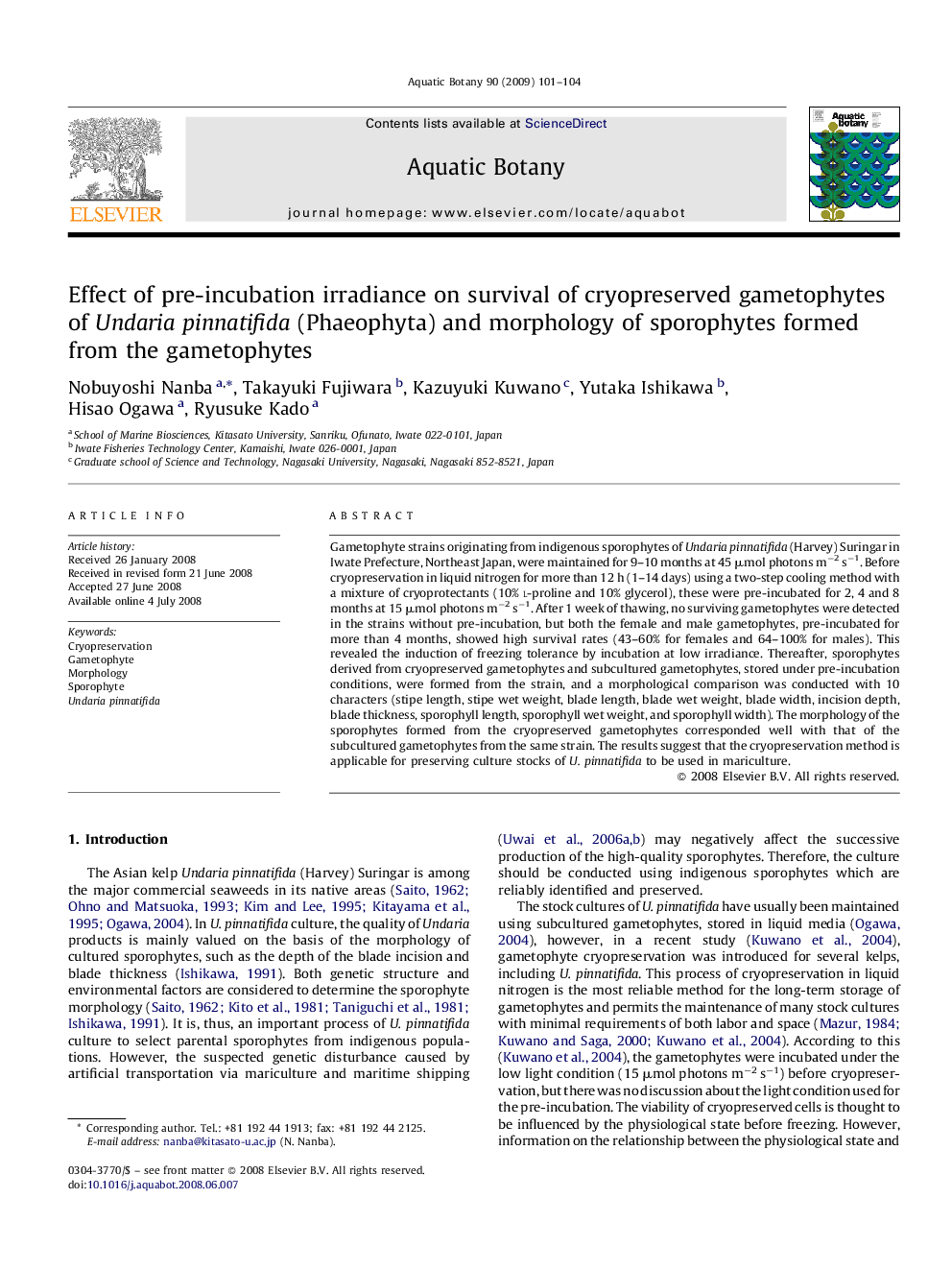| Article ID | Journal | Published Year | Pages | File Type |
|---|---|---|---|---|
| 4528509 | Aquatic Botany | 2009 | 4 Pages |
Abstract
Gametophyte strains originating from indigenous sporophytes of Undaria pinnatifida (Harvey) Suringar in Iwate Prefecture, Northeast Japan, were maintained for 9-10 months at 45 μmol photons mâ2 sâ1. Before cryopreservation in liquid nitrogen for more than 12 h (1-14 days) using a two-step cooling method with a mixture of cryoprotectants (10% l-proline and 10% glycerol), these were pre-incubated for 2, 4 and 8 months at 15 μmol photons mâ2 sâ1. After 1 week of thawing, no surviving gametophytes were detected in the strains without pre-incubation, but both the female and male gametophytes, pre-incubated for more than 4 months, showed high survival rates (43-60% for females and 64-100% for males). This revealed the induction of freezing tolerance by incubation at low irradiance. Thereafter, sporophytes derived from cryopreserved gametophytes and subcultured gametophytes, stored under pre-incubation conditions, were formed from the strain, and a morphological comparison was conducted with 10 characters (stipe length, stipe wet weight, blade length, blade wet weight, blade width, incision depth, blade thickness, sporophyll length, sporophyll wet weight, and sporophyll width). The morphology of the sporophytes formed from the cryopreserved gametophytes corresponded well with that of the subcultured gametophytes from the same strain. The results suggest that the cryopreservation method is applicable for preserving culture stocks of U. pinnatifida to be used in mariculture.
Related Topics
Life Sciences
Agricultural and Biological Sciences
Aquatic Science
Authors
Nobuyoshi Nanba, Takayuki Fujiwara, Kazuyuki Kuwano, Yutaka Ishikawa, Hisao Ogawa, Ryusuke Kado,
